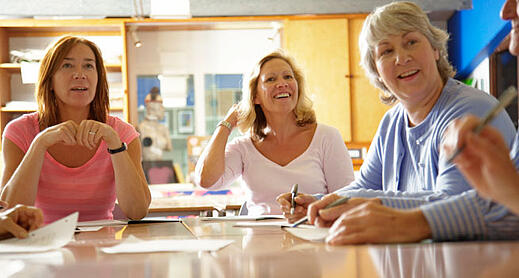
I had a difficult experience during a training last week. It would have been difficult in any setting, but the group dynamics added to the situation. On day two of a three-day training, we received news that a toddler from one of the participant’s programs had unexpectedly passed away the evening before. One participant, a supervisor in that program, had to leave the training early to talk with parents. The other participants were just sitting there, staring at me while I tried to recover from the terrible news and remain present and in control of my emotions. I looked around at the grief and disbelief on the faces of the participants, and knew we needed a break.
When people returned to their seats, I noticed that the affect in the room was suddenly flat—no smiles, no laughter. All of the enthusiasm had left the room. I knew that I needed to work on the Emotional Support in the room in order to get the participants engaged in the material again.
So I started with Positive Climate...Relationships. I made sure I was in closer proximity, moving through the room, standing behind participants, leaning forward. I made sure that we had an opportunity for shared positive affect by putting on a quick, light hearted and funny YouTube video that we all laughed about. I made sure to increase my positive affect, by smiling brighter and increasing my verbal and physical affection. I patted shoulders, and made positive comments like, “You guys really nailed it!” and “I couldn’t have said it better myself!” I used more first names and increased my eye contact. I cheered for them (literally), and saw the Positive Climate increase again.
But I wasn’t just concerned with the Positive Climate in the room; I was also concerned about (Student) Comfort. Participants weren’t talking as freely as they were before the heartbreaking news. So I started with the basics – Awareness and Responsiveness. I could see that everyone was still experiencing shock and grief. In all honesty, I was too. I acknowledged the serious emotions, mine included. I recognized how difficult it must be for them to remain present and engaged. And I provided as much comfort as I could. I told people to take 10 minutes to call their loved ones, their families and centers and then we would get back to the training.
After intentionally focusing on Positive Climate and Teacher Sensitivity for the first half hour immediately following the tragic news, I realized that although there was still heaviness in the air, we were progressing through the material. People were smiling and laughing with each other and discussing the dimensions. When we talked as a whole group, people freely offered their observations. We were back on track. It should have come as no surprise, but I realized in that moment how much interactions matter and the power of relationships.

